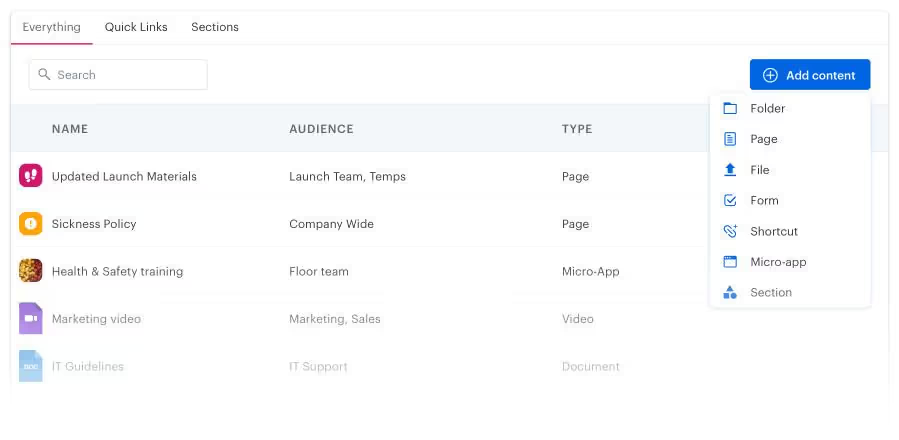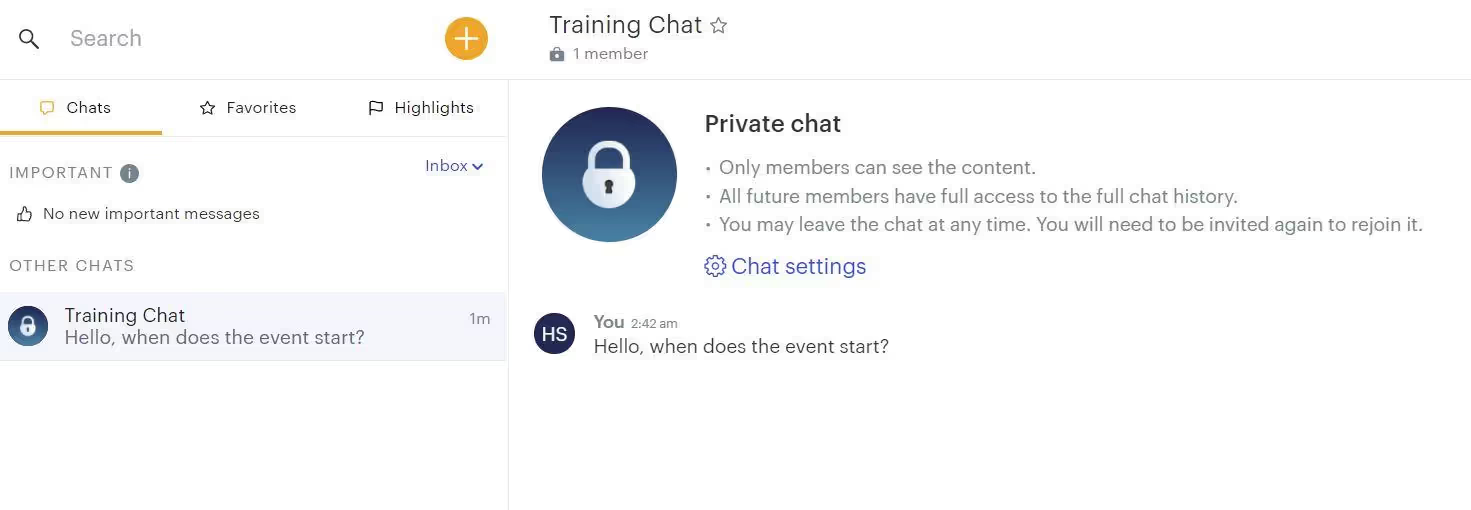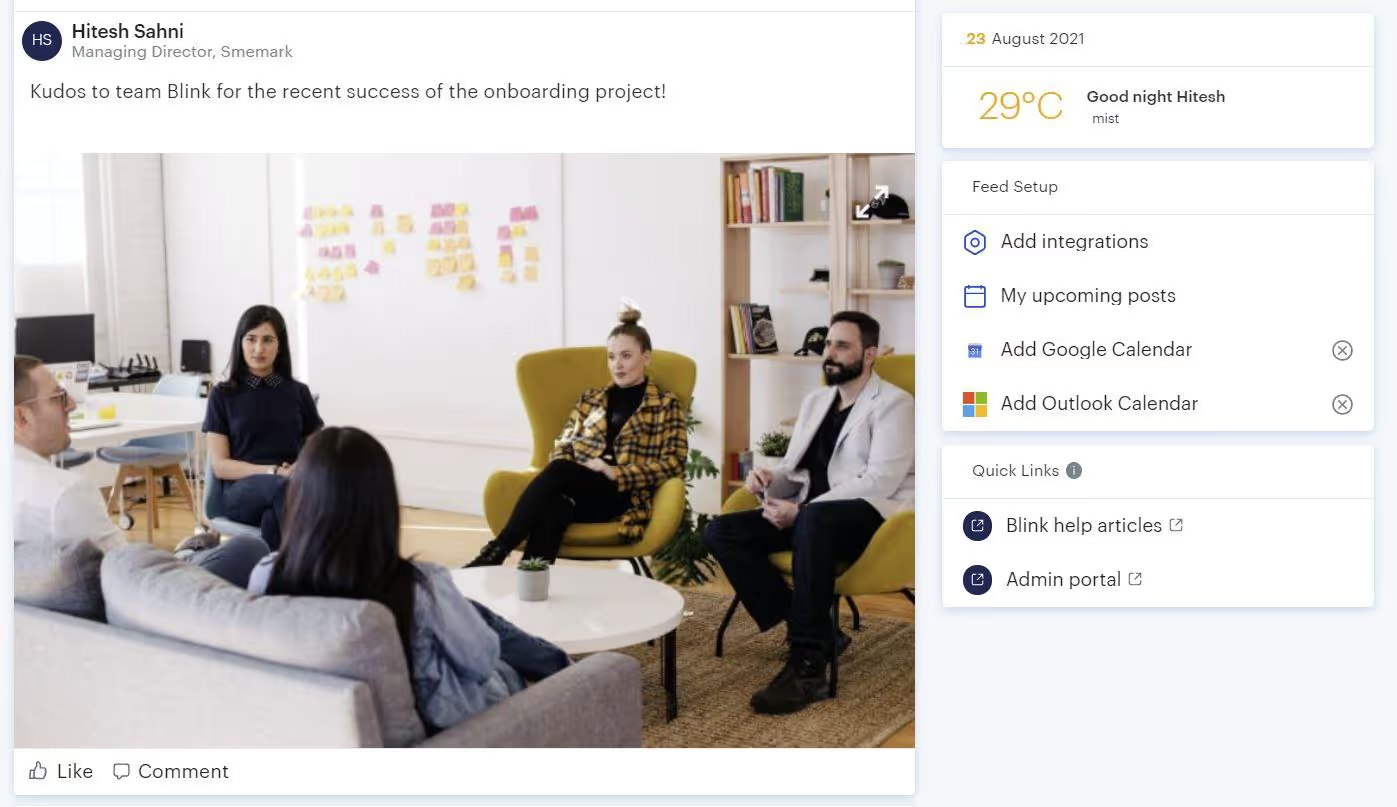Healthcare. Manufacturing. Hospitality. Whatever your industry, frontline workers are the lifeblood of your company.
Frontline workers know what’s wrong before you do.
They know what delights customers—and what drives them mad. Why customers are buying less, cancelling contracts, moving to competitors.
The problem? Most companies aren’t listening.
Research shows 60% of frontline workers feel their suggestions go unheard. That can be discouraging and lead to disengaged employees.
That’s why, to get your frontline staff to feel appreciated, you must find ways to improve employee experience. By doing so, you’ll see a drop in absenteeism, safety incidents, and an increase in work quality.
It’ll also translate to a better experience for your customers. After all, your frontline staff interacts with your clients every day. If they feel better, they provide better service.
The benefits are great, but remember—it all starts with making your employees feel heard.

For that reason, it’s crucial to include your frontline workforce in internal communications. Not by sending ad-hoc corporate comms in their direction. But by creating an internal comms strategy that’s as relevant to frontline workers as it is to desk workers.
With thoughtful, relevant communications at every stage of the frontline employee lifecycle.

The employee lifecycle refers to the employees’ experience at your company throughout their tenure. It starts from the instant they first learn about your company and ends when they exit.
An understanding of the employee lifecycle can guide you on how to personalize employee experience to match workers’ unique priorities.
80% of professionals rate employee experience as important or very important, but 59% feel they are not ready to address the associated challenges. That explains why many organizations have a one-size-fits-all approach to creating a workplace experience.
However, different employees have different needs based on where they are in the employee cycle. Making that distinction is one of the ways HR can improve employee experience.
Moreover, the duration of the employee lifecycle also depends on whether the majority of your staff is desk-based or frontline. Frontline workers tend to leave at a dramatically higher rate than their desk-based counterparts.
In fact, most verticals see an average of 50% turnover per year, leading to several disadvantages:
- Increase in likelihood of data breaches
- No provision for giving digital identity to frontline workers
- Additional schemes and incentivization to retain frontline workers
- Constant hiring, onboarding, and offboarding
- Decline in loyalty towards the organization
No wonder the employee lifecycle of frontline workers is so damaging and frustrating. It’s unfortunate considering how this turnover can be reduced without making a big hole in your budget.
Just put yourself in your worker’s shoes—What should the company start doing to improve your employee experience?
Frontline workers aren’t just motivated by money. They are also driven by meaningful work, inspiring work culture, and internal recognition. By implementing an effective internal communication technology and employee experience software, you can have many of them stay longer with the company.
An intro to employee lifecycle management software
Including frontline workers in your internal comms doesn’t just help you garner customer insights; it adds to your bottom line. In fact, a recent Forbes study showed firms that involve 75% of their frontline employees in internal comms achieved more than 20% growth over a year.
As frontline workers also tend to be remote workers—on the field, at the bus depot, at a hospital—the easiest way to bring them into communications is via employee lifecycle management software that reaches them wherever they are.
In other words: if you can’t bring them into a physical office, bring them into a digital one. Building a better employee experience starts with bringing your frontline staff into the conversation.
This digital platform used to be a desktop-based intranet, but that technology has gone out of date in recent years, especially for frontline workers.
In fact, our recent research shows that 2 in 10 healthcare employees don’t even know how to use their company intranet. It’s just too sluggish for today’s workplaces.
While desk-based workers have improved their workflows with technologies such as Slack and Microsoft Teams, frontline workers are stuck with noticeboards and letters.
That’s where modern intranet software fills the gap. It’s built for mobile, but also compatible with desktop devices. Providing a single hub for knowledge sharing and communication makes way for a better employee experience at every step of improving the employee lifecycle.
What are the employee lifecycle stages?
1. Outreach
The first stage of the employee lifecycle is when potential employees come across your brand and the job vacancy.
But today’s workers are more selective than ever before. The average number of applicants per job opening has declined from 52 in 2016 to 36 in 2017 and 29 in 2018.
The number of applicants in 2021 increased, but only 30% of these job applications were completed.
Potential workers don’t express interest just because you have an open position. And they won’t blindly trust the positive references provided by your company.
Instead, they’ll rely on the PR you have “earned.” They’ll read online reviews, reach out to your current staff members, and check your social media mentions. Improve employee experience, and you’re more likely to read positive posts or tweets.
That’s why your employer branding is crucial at this stage. Your employer brand is how potential and current employees view your company. It’s the image that comes to their minds when they think about your reputation as an employer.
And it can be strengthened with the right communication tools.
Think about what you would suggest to improve your experience as an employee, and ask your frontline staff for their input.
A modern intranet solution such as Blink can help you ensure that your existing workers are well-versed with all your policies, core values, brand statement, employee benefits, and recent accomplishments.

ALT: Blink centralizes document sharing to improve employee experience.
This information will shape the messages your employees spread elsewhere on the web through employer reviews, informational interviews, and social media updates. And it’ll help you build a reputation that attracts a talented workforce.
2. Recruitment
The demand for frontline workers is higher than ever due to the pandemic and great resignation. However, the talent pool has been retiring or retraining for less demanding positions.
The result is a massive shortage of frontline workers. No wonder 82% of companies struggle to recruit the right people.
If you want to attract the best talent, demonstrate you know how to enhance employee experience for your workers. You need a concrete strategy that brands your organization as an exceptional place to work. And at the core of this strategy is a modern intranet platform.
Encrypted and fully secure private messaging between members of your hiring team (or any of your workers) should be a priority. Blink offers this and robust form-building functionality that enables your HR division to create application materials tailored to each vacancy.
3. Onboarding
Most employees make up their minds about staying or leaving an organization within the first three months of joining.
And given the fast turnover in recent times, it’s important to start on the right foot and look for ways to improve employee experience. One such method is improving the onboarding process. Implementing a structured employee onboarding process is essential to making a good impression on your top talent and shaping them into productive, engaged team members, which will ultimately have a positive impact on employee performance and retention.
Onboarding processes often consist of many meetings and conferences, along with tons of files and folders that need to be reviewed, filled, and submitted to different departments.
Depending on the size of your recruitment drive, you may also need to create hundreds of new datasets for each hire, increasing the risk of inaccuracies.
An intranet can help you centralize, structure, speed up, and even automate parts of the process.
With Blink, for example, you can automate the entire user creation process, eliminate a great deal of overhead, and keep the user profiles always up-to-date.
Not just that, setting up a designated onboarding site with Blink can help you centralize essential training materials and resources. You can also encourage new employees to connect with each other and ask questions using the chat function.

Another onboarding issue that arises with frontline workers is that many don’t have a corporate email address, let alone a digital identity. That’s why Blink lets you set up accounts for frontline workers without assigning them email addresses or phone numbers.
The beauty of such a system is that frontline workers can easily access Blink and the data associated with third-party software integrations such as Microsoft 365.
The result? Your company makes a great impression and your workers start identifying themselves with your culture right from the beginning.
4. Training and development
Learning is another crucial part of the employee lifecycle. However, a common issue for frontline organizations is the difference in the learning styles of workers.
Let’s take the age factor for example. While older employees may prefer conventional training tools such as seminars, meetings, and paper-based reading material, younger generations are more inclined towards social engagements, texting, and online reading.
Blink has the tools you need to bridge this gap, all accessible from a single place. For the young crowd, it offers social and gamified training features like badges, kudos, and leaderboards.
Meanwhile, baby boomers get access to traditional educational formats including video webinars, explainer videos or articles, and printable manuals.
5. Performance
This stage of the lifecycle usually requires some ideas to update your employee experience strategy with some new ideas.
After all, a common issue with frontline workers is the lack of well-defined career progression. Many stay in the same role and pay bracket throughout the employee lifecycle, and not necessarily because they want to.
Workers can feel they have no big, long-term goal to strive for. That affects motivation and engagement while increasing employee turnover.
Blink can support you here too, by letting you plan concrete roadmaps to aid career growth and promotion milestones.
Your workers can get a direct line of communication with mentors whose careers they wish to emulate, along with learning materials and best practices to build new skills.
Employee recognition is the key to engagement, yet 63% of employees don’t feel recognized for their achievements. With Blink, you can monitor workers’ progress and reward top performers.

Little gestures such as giving a big ‘thank you’ at an online event, or tagging and thanking people in the newsfeed or your organization or department can go a long way. It would also encourage other employees to follow suit.
6. Offboarding
As much as intranet software can increase employee engagement and slow down your turnover, some employees will still leave. And it’s important for your organization to get a pulse of the exit process.
According to one study, companies that act on employee feedback have twice the engagement score of those that don’t.
You basically want to know three key things:
- Why are they leaving? Timely feedback can help nip key issues in the bud.
- Did they successfully complete all their exit formalities?
- Do they still have access to any sensitive information?
So Your intranet solution should be ready to handle all these aspects.
Blink, for instance, automates de-provisioning, eliminating the risk of ex-employees still having access to company data.
It also helps you organize exit interviews, offboarding checklists, and pulse surveys so you can learn from each employee’s feedback to improve employee experience.
Final thoughts: Improve employee experience with an optimized intranet
To succeed in the new work era, frontline workers need experiences tailored to their needs at each stage of the employee lifecycle. Whether it’s their first week on the job or last, they need personalized resources, training, and access to key people in the organization.
Learning how to improve employee experience at each of these stages will help reduce turnover, increase engagement, and lead to happier workers. Understand how employee experience and engagement work together. Don't forget to into account the relationship between employee engagement and employee experience.
Employee lifecycle management can help you deliver a stellar experience to both frontline and desk-based employees. And by adopting a next-gen intranet software like Blink, you’ll increase employee engagement and streamline your worker’s experience.

